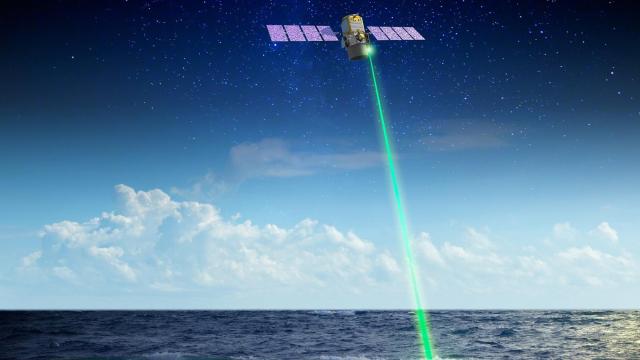After blasting beams of energy through the clouds for the past 17 years, NASA’s lidar satellite mission came to an end this past August, the agency has revealed.
CALIPSO, a joint mission by NASA and the French National Centre for Space Studies (CNES), had exhausted its fuel reserves. Due to its decaying orbit, the satellite was no longer capable of generating sufficient power to operate its science instruments. As such, the two space agencies agreed to end the mission on August 1, NASA announced on Tuesday.
The mission combined an active lidar (an acronym for light detection and ranging) instrument with passive infrared and visible imagers to probe the vertical structure and properties of thin clouds and aerosols in Earth’s atmosphere. Lidar, as well as radar, direct beams of energy towards Earth and then measure how the beams reflect off the clouds and aerosols. That’s why lidar is considered an active sensor compared to other science instruments, which use passive sensors that measure reflected sunlight or radiation emitted from the Earth or clouds.
CALIPSO, which stands for the Cloud-Aerosol Lidar and Infrared Pathfinder Satellite Observation, launched on April 28, 2006 in tandem with the cloud-profiling radar system on the CloudSat satellite. CALIPSO used laser light while CloudSat used radio waves.
“We had to build, for the first time, a sophisticated lidar capable of operating in space,” Chip Trepte, NASA’s project scientist for CALIPSO, said in a statement. “Then we intended to fly that satellite in close formation to match the CALIPSO lidar profile measurements with the radar profile measurements from CloudSat.”
The two satellites were placed in Sun-synchronous orbits from the North to the South poles, crossing the equator in the early afternoon every day. From their observational perch, they probed the vertical structure of the atmosphere, measuring the altitude of clouds and layers of airborne particles such as dust, sea salt, ash, and soot, according to NASA. Together, they provided scientists with unique simultaneous observations and never-before-seen 3D perspectives of how clouds and aerosols form.
“One of CALIPSO’s most important applications was detecting the presence and measuring the altitude of ash plumes from volcanic eruptions,” Dave Winker, principal investigator for CALIPSO, said in a statement. “These observations were used by Volcanic Ash Advisory Centers around the world to alert and direct commercial aviators to avoid flying into the plumes.”
“I have a feeling of accomplishment that the mission we conceived 25 years ago operated successfully over a long period of time,” he added.
